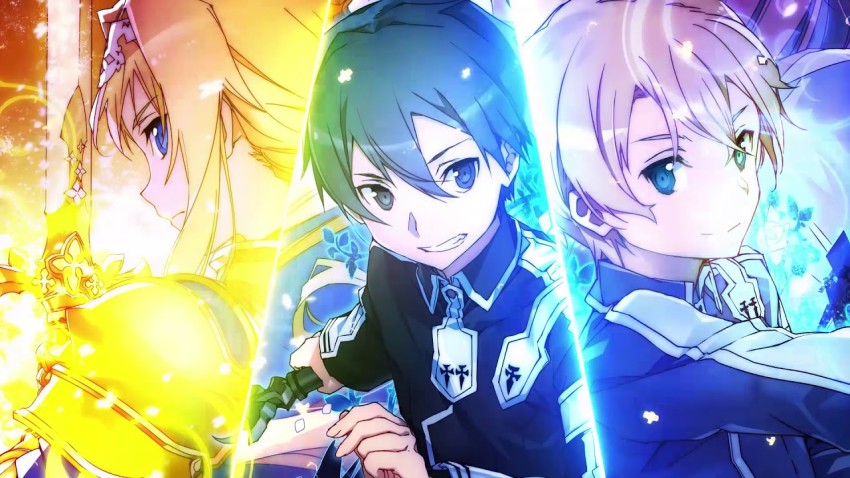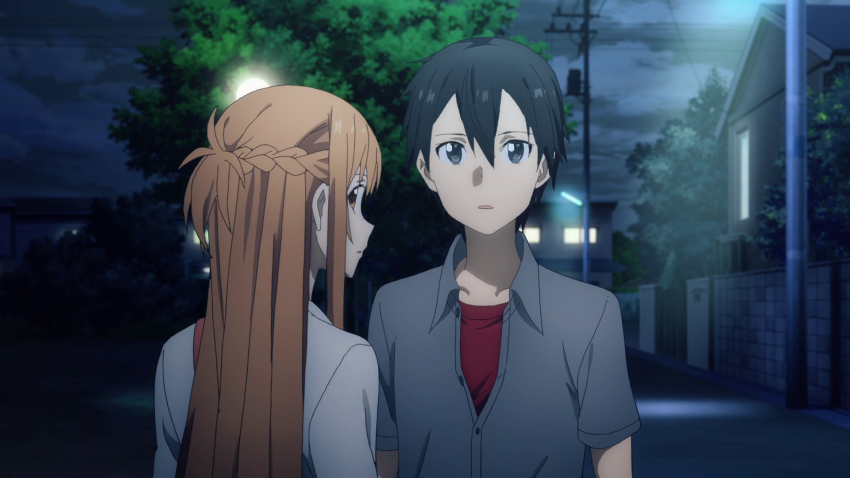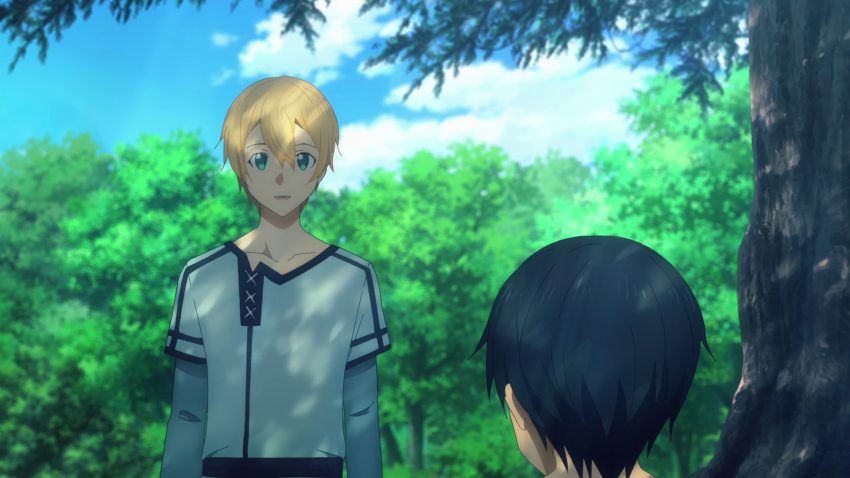SAO: Alicization
September 29, 2020 · 0 comments
By Andrew Osmond.
 Sword Art Online: Alicization is much more than a new SAO adventure. It’s an epic new phase of the franchise, an audacious statement that the saga is only getting bigger. In print form, the Alicization story stretched over nine books by series creator Reki Kawahara. Meanwhile, the studio A-1 Pictures announced Alicization would take about 50 episodes to adapt, with the first 13 parts on this opening volume released by Anime Limited.
Sword Art Online: Alicization is much more than a new SAO adventure. It’s an epic new phase of the franchise, an audacious statement that the saga is only getting bigger. In print form, the Alicization story stretched over nine books by series creator Reki Kawahara. Meanwhile, the studio A-1 Pictures announced Alicization would take about 50 episodes to adapt, with the first 13 parts on this opening volume released by Anime Limited.
Alicization is a direct continuation of the previous SAO anime – Sword Art Online, Sword Art Online II and the film Ordinal Scale. (If you’re wondering about Gun Gale Online, that was a light-hearted side-story with different characters, fun but optional.) If you’re not up to date with SAO, be warned spoilers follow.
The new series starts enigmatically, hinting this is a new kind of SAO story. We begin with three preteen kids, sweetly affectionate friends, living in a village in what seems to be a fantasy game-world. For example, the kids can summon up little data screens in familiar SAO fashion. But the kids think their world is real, not a game.
One of the three children is a girl called Alice – and it’s plainly not coincidence that she looks like the archetypal Lewis Carrol character (blond hair, blue-white dress). She has two male playmates. There’s Eugeo, a light-haired lad who seems happy with his lot, even if his lot is to live out his life as a woodcutter, chopping at a malevolent “demon” tree that will take generations to topple.
The other boy is Kirito, seemingly a preteen version of the Kirito we know – except this Kirito thinks he’s lived in this world since he was born. One day, Alice, Eugeo and Kirito set out to nearby mountains, which contain the cave of a legendary dragon. But something goes very badly wrong, and Alice ends up being taken from the boys, seemingly forever.
Then we cut to the familiar world of Sword Art Online. The tragic tale of the children seems to have been a swiftly-forgotten dream of “our” Kirito, just months after the events of Ordinal Scale. As Kirito explains to his girlfriend Asuna, he’s thinking about his future, and of even leaving Japan. But in the meantime, he’s been testing out another kind of deep dive technology, though it’s a bit different from usual. Called the Soul Translator, the tech is supposedly able to read human consciousness, the “soul” itself, and send it information to create a subjective world… a world more convincing than anything Kirito’s experienced online.
 Kirito and Asuna walk home on a peaceful evening, when suddenly they’re attacked by a murderous enemy from the past. Defending Asuna, Kirito is horribly injured. And then… the mystery deepens.
Kirito and Asuna walk home on a peaceful evening, when suddenly they’re attacked by a murderous enemy from the past. Defending Asuna, Kirito is horribly injured. And then… the mystery deepens.
Kirito wakes in the rural fantasy world we saw before, and finds there’s no way to log out to reality. This time, it’s clearly “our” Kirito – he’s a teenager, and has all his memories of his past adventures. However, he doesn’t remember the events we saw earlier, his childhood friendship with Eugeo and Alice, though he has flashes of déjà vu.
Almost immediately, Kirito meets Eugeo, now a youth Kirito’s age, still hacking away at the demon tree. Kirito doesn’t recognise Eugeo, nor does Eugueo recognise Kirito. Instead, he greets Kirito hospitably as a stranger, talking about his lost friend Alice. Eugeo claims he was the girl’s only companion on their journey to the cave, six years ago…
Alicization is mainly the story of Kirito and Eugeo, at least in this first volume. We do see more of the established SAO characters in the “real” world, Asuna, Lisbeth, Silca and the rest, but they’re cut off from Kirito and the main adventure. In effect, the new series puts Kirito back where he was in the earliest SAO episodes, in a strange new land without a band of allies to rely on,
Some viewers may complain the opening episodes are slow. Yet the process of a character working out how a world works is a pleasure of fantasy (and SF) stories, one that too many anime skip. Alicization’s early episodes, showing Kirito staying at a church and wondering how to help Eugeo cut down his flipping tree, echo older anime which placed characters into fantasy worlds to live, not just conquer. An example is Grimgar of Fantasy and Ash, available from Anime Limited, and made by SAO’s studio A-1 Pictures. An older case is the beautifully mysterious 2002 series Haibane Renmei.
Actually, it’s not long before more of Alicization’s story is explained, through the real-world interludes with Asuna and co. The mysterious official Kikuoka, seen in SAO II, figures heavily; so does Rinko, the one-time lover of the infamous “Heathcliff” in the original series. The conspiracy that unfolds draws on old-school cyberpunk novels such as William Gibson’s Neuromancer; it’s also reminiscent of Greg Egan’s Permutation City.
 But the weight of these episodes stays on Kirito and Eugeo’s journey, and the friendship between them. (The boys have a lot of time together; time in this world runs faster than in ours, and two years skip by from Kirito’s viewpoint.) They graduate to fighting monsters, and Eugeo learns he could be more than just a woodcutter, and more than the coward he thinks he is.
But the weight of these episodes stays on Kirito and Eugeo’s journey, and the friendship between them. (The boys have a lot of time together; time in this world runs faster than in ours, and two years skip by from Kirito’s viewpoint.) They graduate to fighting monsters, and Eugeo learns he could be more than just a woodcutter, and more than the coward he thinks he is.
The show is punctuated by Eugeo’s surpassing of boundaries, and Alicization often feels more like his story than Kirito’s. Eugeo is voiced in Japanese by Nobunaga Shimazaki, whose past roles include Haruka in Free! and Yuki (the rat) in the remade Fruits Basket. The actor was also Manato, a pivotal charater in Grimgar, mentioned above.
His dreams growing, Eugeo determines to search for his childhood friend Alice. Kirito, who has a ghostly encounter with the girl, promises to help; of course, he’s also looking for answers to this world where he’s trapped. The two boys’ journey take them far beyond the village, through gruelling training in swordplay and willpower (which is a force that shapes this world), and to new friends and foes.
There’s one point it would be remiss to leave out. There’s one episode on this set which includes an intense scene of sexual threat against female characters. SAO fans will know this is something the franchise has done before. The scene in question isn’t so graphic, but it is nastily protracted. The scene’s purpose in the story – and it is a crucial turning-point for the characters – is defensible, which is sadly more than can be said for its leering execution on screen (it’s likely to be the reason why the BBFC awarded this an 18 certificate).
The Anime News Network site reported that SAO’s creator Reki Kawahara tweeted his own comments when the episode was broadcast in Japan. Kawahara claimed that when he’d created such scenes in his books, he was influenced by the light novels and stories he’d read in middle school, but “Nowadays, I would prefer to express catharsis through other means.” He also tweeted an apology to the female voice-actors who were involved in the scene.
Andrew Osmond is the author of 100 Animated Feature Films.
Sword Art Online: Alicization is released in the UK by Anime Limited.
Leave a Reply